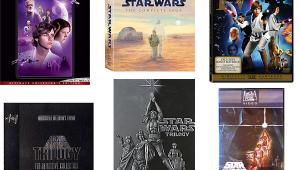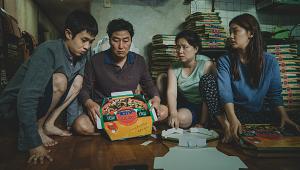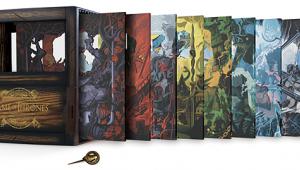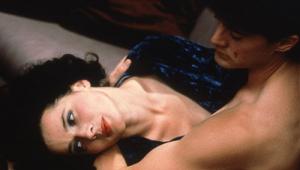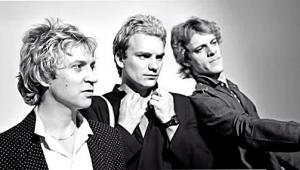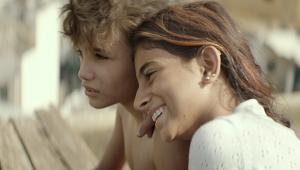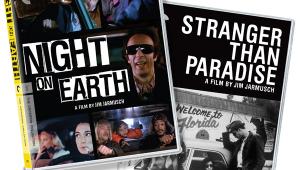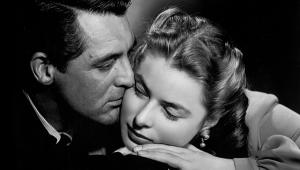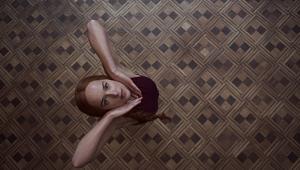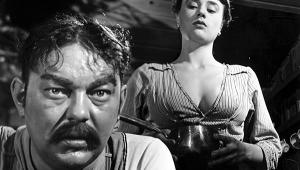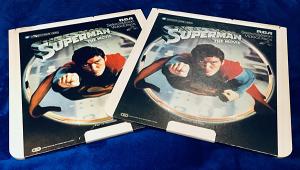The Lion King's New Roar Page 2
Hakuna Bonanza With the decision to release The Lion King on DVD, Porter was able to take his revision of the soundtrack one step further. Building on his experience mixing the soundtrack for IMAX theaters, he created a version tailored for home acoustics and playback gear - the 5.1 Disney Enhanced Home Theater mix. 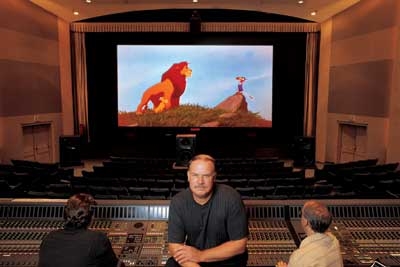 Sound engineer Terry Porter (center) remixed The Lion King for DVD in Disney's Main Theater, bult in 1937 for postproduction on Fantasia.
Sound engineer Terry Porter (center) remixed The Lion King for DVD in Disney's Main Theater, bult in 1937 for postproduction on Fantasia.
"We produced an exciting soundtrack back in 1994," Porter explains, "but it wasn't overly aggressive and certainly not as dynamic as what I might have done today." In addition, the sonic tastes of audiences have changed since the original release.
"Listeners have become much more sophisticated," he notes. "Ten years ago, I don't think the average listener even knew, let alone sought out, Dolby Stereo over mono. But the average listener is very much aware now, so the expectations are much higher." For the DVD release, Porter vowed that he was going to really push the envelope - and that's what he did. "I had some techniques I'd been dying to try that I couldn't in regular theatrical mixes."
For this new soundtrack, Porter abandoned the Main Theater's usual playback system and instead installed smaller Genelec speakers in a setup with dimensions similar to those of a typical living-room home theater. He then took the movie's three 5.1-channel "stems" - the original mixes of dialogue, music, and sound effects - and processed and rebalanced them as necessary, creating a soundtrack that probably wouldn't work well in a movie theater but is ideal for the home. Porter was careful to stay true to his original mix - for example, wherever possible, he kept the same balances in the stems - while optimizing the soundtrack for playback in a very different environment.
Porter's main goal was to create a more enveloping sound field. He also wanted to have a large sweet spot so his dimensional effects would be realistic even for someone seated at the end of the couch. Having mixed the film twice before was a great asset, of course, as was being able to play back the earlier mixes to gauge his changes.
The original soundtrack had to be recorded at a relatively low level to avoid distortion during downmixing. But Porter didn't have to worry about that for the DVD mix, so the Enhanced version is indeed recorded on the Special Edition at a higher volume relative to the original soundtrack.
After working 8 to 10 hours a day for 10 days, Porter had something to show for his efforts. The result? "It's one of the few times that something I've done not only met my expectations but actually exceeded them," he said. "The three-dimensional effect of the surround mix is really nice. But the byproduct I wasn't anticipating - and you'll hear it - is this nice, warm sound.
"I wanted an environment that totally surrounds you, but in closer proximity [than you can get in a theater]. I wanted you to feel like you're sitting in the middle of the orchestra. The combination of the stereo imaging from the front speakers and the stereo imaging from the surround channels creates a third dimension to the audio." And when he played his Enhanced soundtrack for the film's producers, he won their enthusiastic thumbs up.
The Surround of Life So that I can hear what they heard, Porter plays me several key scenes from the movie, comparing the original soundtrack with the new version. As Chapter 1 begins with "The Circle of Life," the new mix is immediately more engaging. The surrounds are louder, increasing the audibility of the diffuse wash of reverberation on the backing vocals and percussion there, yielding a more spacious sound that reflects the picture's open African landscapes. The elephant footsteps and waterfall are fortified with slightly boosted bass. As in the original mix, a flock of birds flies left to right, and a lone bird flies from back to front, but the effect levels are raised, especially in the surrounds, accentuating the sound field created by the effects. You are more surrounded by sound.
The stampede in Chapter 9, maybe the movie's most thrilling scene, begins with crickets and simple dialogue, and then a roar echoing in the background. As the stampede accelerates, the subwoofer builds in intensity until it rumbles convincingly. When the picture cuts to an overhead view, or the stampede is seen from the midst of the herd, both mixes use the surrounds to emphasize tympani and hooves. But the new mix, by boosting the level of the stampede and the other surround sounds, makes it seem like the animals are storming through your listening room.
Chapter 13's "Hakuna Matata" also benefits from more lively surrounds. The original mix primarily has some subtle keyboard, tuba, strings, backing vocals, and marimba in the surrounds. The Enhanced mix adds most of the rest of the orchestra and chorus, essentially doubling the front left/right mix in back and putting you in the middle of the song.
"Can You Feel the Love Tonight" (Chapter 17) is very stylized. Because the characters don't sing to the camera and some of the lines are their internalized thoughts, Porter had greater opportunity for creative freedom. "I took everything to the limit," he says. In the original mix, as the lions Simba and Nala frolic, the surrounds contain reverberated female lead vocals and backup vocals, and the orchestra panned there is mainly limited to guitar and strings. Nala's thoughts - even reverberated ones - aren't present in the surrounds at all.
In the new mix, the surrounds spring to life, and the result is electrifying. As in the original, the vocals are in the front channels. But in the Enhanced version, the female vocals are also heard in the surrounds on both the enunciated and internalized lines. The male vocals are there, too, as well as most of the orchestra, with everything at boosted levels. (Any aspiring sound engineer should unplug everything but the surrounds and listen to both versions because Porter presents a textbook on mixing techniques.)
In this chapter especially, you can clearly hear the Enhanced version's wider sound field. Images come from broad arcs instead of from pinpoint speaker sources. You're in the middle of the mix instead of outside looking in. Most impressive is that the integrity of the original balance is retained and the dialogue can still be heard, while the surrounds do much more of the job for which they're intended: to surround you.
It could be argued that art shouldn't be altered in any way and that the original concept of any movie should be kept intact. For those purists, the original, unaltered soundtrack is on the DVD. For the rest of us, the opportunity to listen to a soundtrack tailored to our listening environment is too good to pass up.
The Enhanced mix on The Lion King DVD was an experiment. Whether the idea will be used for future releases remains to be seen. But based on Porter's impressive work, it's hard to imagine that Disney would even debate the issue.
PDF: Diagrams
- Log in or register to post comments


